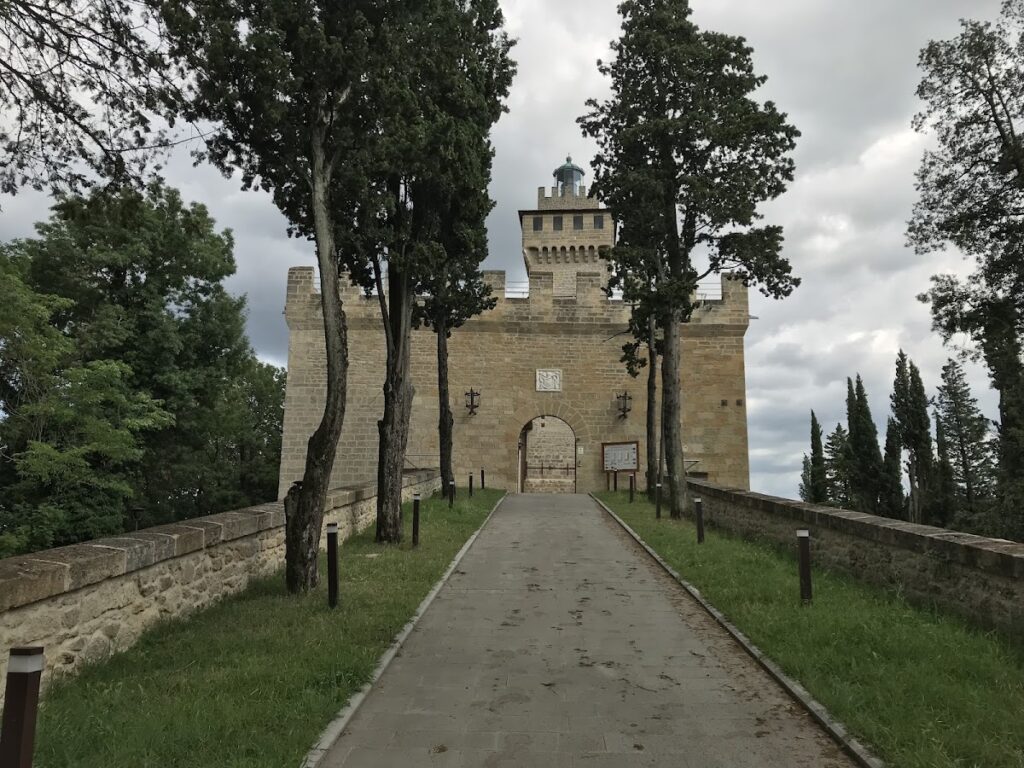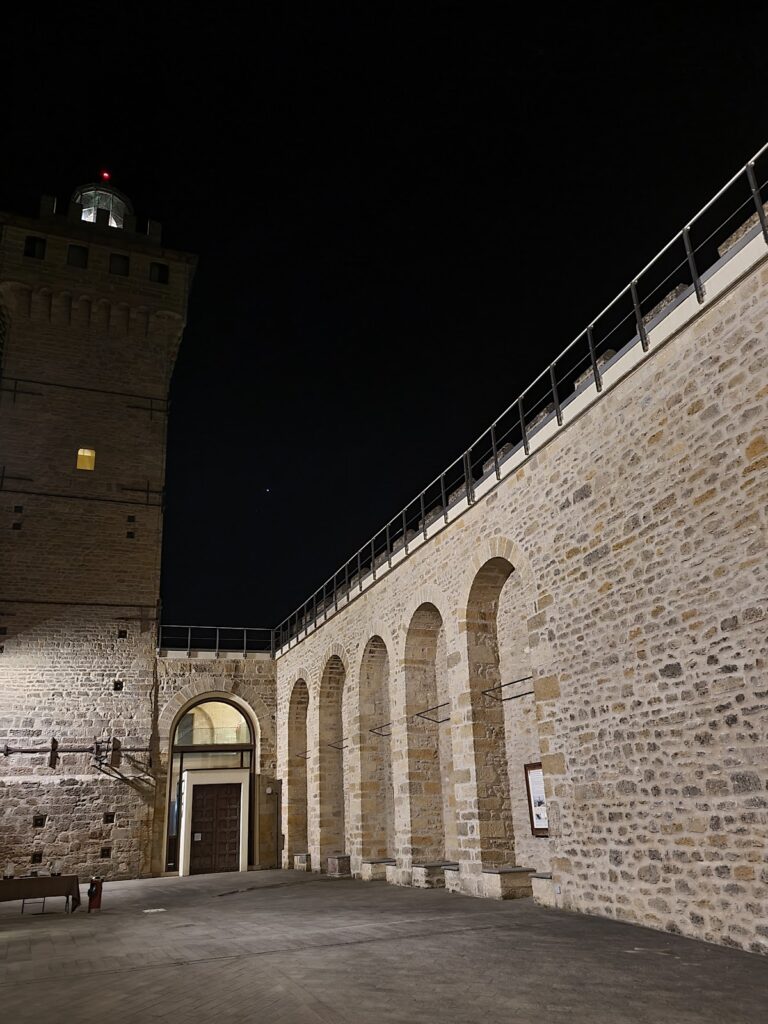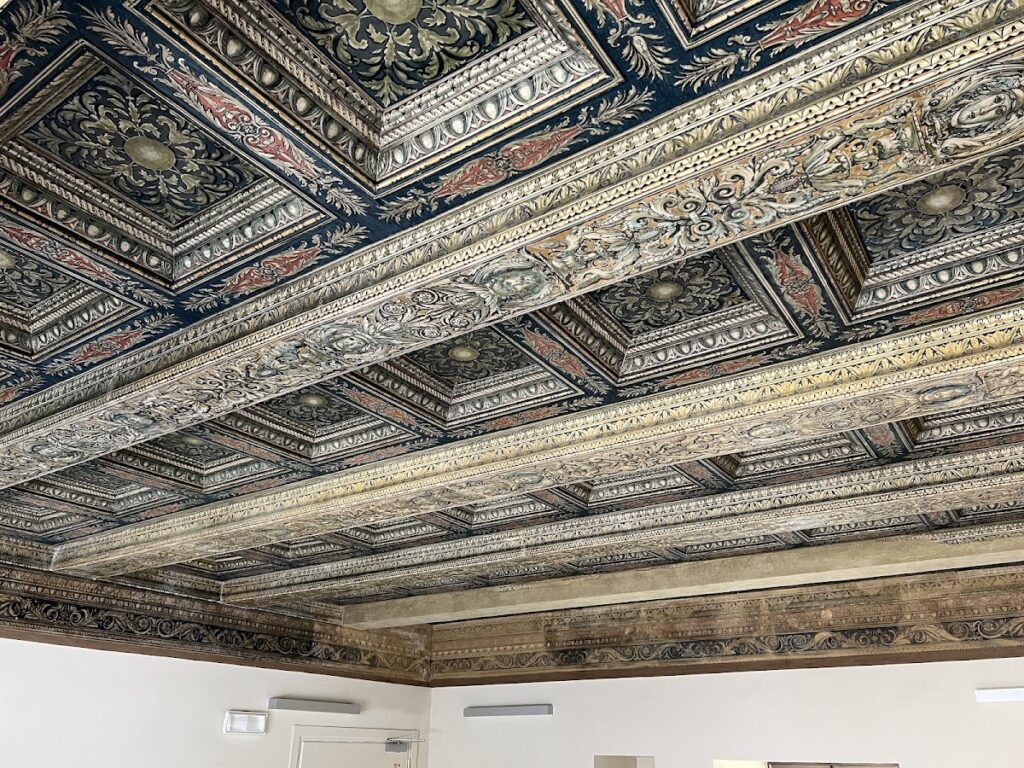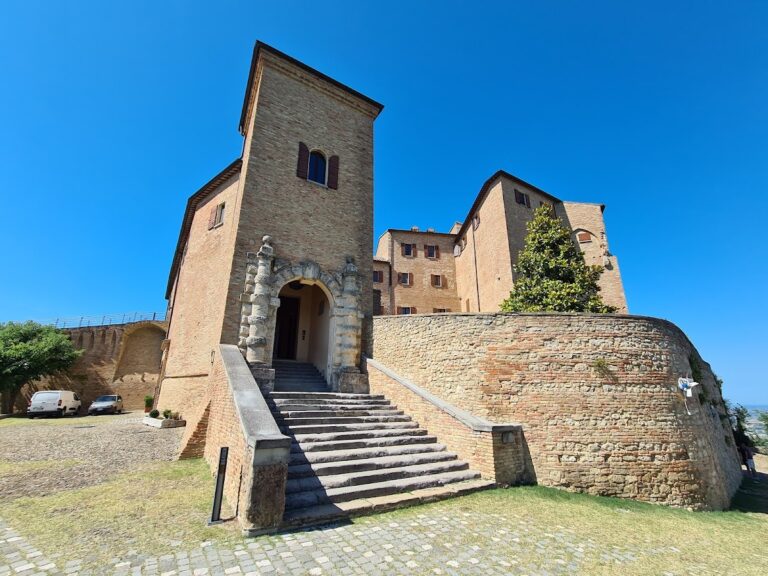Rocca delle Caminate: A Historic Fortress in Meldola, Italy
Visitor Information
Google Rating: 4.3
Popularity: Low
Google Maps: View on Google Maps
Official Website: www.roccadellecaminate.com
Country: Italy
Civilization: Unclassified
Remains: Military
History
The Rocca delle Caminate is a fortress situated on a hilltop in the municipality of Meldola, Italy. Its origins date back to the early medieval period, having been built, at least in part, atop remnants of an earlier Roman fortification.
The first historical mention of the site appears in 997 under the name Castrum Caminate, also referred to as Caminatari or Montis Tetti. At that time, control over the fortress was held by Ambrone delle Caminate. During the Middle Ages, the Rocca passed through the hands of various noble families and political powers. These included local aristocrats such as the Belmontis, Ordelaffis, and Malatestas, as well as external authorities like the Viscontis, the Holy See, the French, and the Venetians. This succession reflects the region’s shifting political landscape and the strategic significance of the stronghold.
Between the 12th and 16th centuries, the fortress experienced cycles of siege, destruction, and reconstruction. Notably, it was demolished in 1120 by Emperor Conrad II and later rebuilt several times, with citizens from nearby Forlì playing a significant role in its restoration efforts. The castle suffered a final destruction orchestrated by Pino III Ordelaffi in 1468, marking the end of major medieval fortification activities at the site.
By the late 1800s, the Rocca had been abandoned and sustained further damage during the 1870 earthquake, resulting in only partial walls and bastions remaining visible. The early 20th century brought a renewed interest in the fortress when it was thoroughly reconstructed between 1924 and 1927. This neo-medieval restoration was financed through a public loan from citizens of Romagna, known as the “Prestito littorio,” and the restored castle was presented as a gift to Benito Mussolini. During his ownership, the fortress served as a summer residence, and a lighthouse capable of casting an 8,000-candela tricolor beam visible from 60 kilometers was installed atop the rebuilt tower to signal Mussolini’s presence.
The Rocca also played a role during World War II when Mussolini convened the first ministerial council of the Italian Social Republic there on 28 September 1943. Nearby barracks housed guards who were implicated in the torture of partisans, including Antonio Carini, known as “Orsi,” who was killed close to the castle in 1944.
Following the war, the castle’s furnishings were removed. Mussolini’s personal desk was preserved and is now held in the mayor’s office of Predappio. Ownership of the Rocca passed from Mussolini’s widow, Rachele, who retained it until 1962, to the Opera Nazionale Maternità e Infanzia, and later, in 1971, was sold to the Province of Forlì for 48 million lire. No significant restoration was undertaken until after 1982. Subsequent partial conservation efforts culminated in a comprehensive restoration completed in 2016, funded by the European Union alongside the provincial authorities. Today, the Rocca delle Caminate serves as a venue for cultural events and is designated as a center for university research and business innovation.
Remains
The Rocca delle Caminate is set on a hill approximately 356 to 366 meters above sea level, offering a commanding view of its surroundings. The earliest parts of the fortress, dating from the 10th to 11th centuries, are preserved only in foundations and certain wall sections. These structural remnants attest to the original medieval construction that stood on these strategic grounds, originally fortified in Roman times.
From the early 16th century, several bastions and defensive walkways remain intact, reflecting the work of Forlì’s citizens who undertook extensive rebuilding efforts during that period. These bastions formed key elements of the castle’s fortifications, designed to enhance defense in an era marked by frequent warfare and sieges.
The neo-medieval reconstruction during the 1920s introduced significant alterations. While following the restoration practices common in that era, this phase involved rebuilding major parts of the fortress, including the tower, which was adapted to house a powerful lighthouse. This lighthouse emitted a strong tricolor light powerful enough to be seen from up to 60 kilometers, serving a unique signaling function during Mussolini’s residency.
Damage caused by the 1870 earthquake had left the castle largely in ruins, with only some bastions and partial walls remaining before the 20th-century restoration made improvements. These surviving fragments are integral to understanding the fortress’s evolving structure.
The castle’s name is thought to derive either from the “caminate,” which refers to the defensive walkways along the original fortress walls, or from the notably large number of heated rooms equipped with chimneys (“camini”), highlighting features that distinguished the fortress historically.
Post-World War II removal of interior furnishings stripped the castle of its period furniture and decorations. Among the preserved artifacts is Mussolini’s desk, now displayed in the mayoral office of Predappio, associating the castle’s interior with its 20th-century use.
Currently, after recent restoration efforts, the Rocca delle Caminate is accessible and serves as a site for medieval reenactments as well as regional events, allowing the historical layers of the fortress to be experienced within a renewed, stabilized architectural context.










